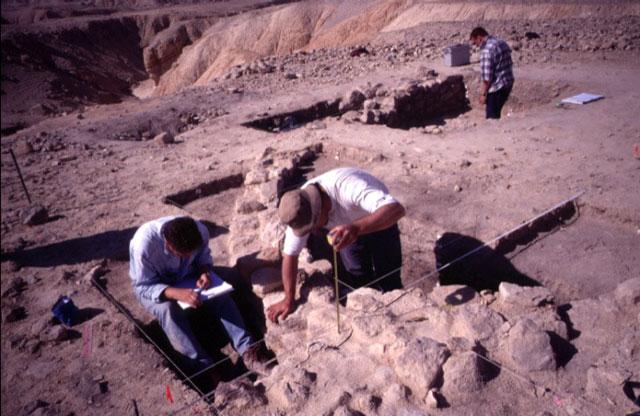Palestinian archaeologist peers into ancient irrigation practices in Lisan Peninsula

The Jordan Times
AMMAN — The early inhabitants of Lisan Peninsula, on the southern corner of the Dead Sea, explored the potential of the spring waters for irrigation, according to a Palestinian scholar.
Their irrigation practices played a crucial part in the development of the early Pre Pottery Neolithic A (10, 000- 8, 500 BC) agriculture, said Sayej Ghattas, affiliated with Agder County Council in southern Norway, which is an equivalent of the Department of Antiquities in Jordan.
Although Ghattas is engaged with the Scandinavian archaeology, the scholar from Bir Zeit remains “dedicated” to the research in the southern Levant, he told The Jordan Times in a recent e-mail interview.
Ghattas said that with a team from La Trobe University in Australia he conducted excavations in the Lisan Peninsula.
“The site of Zahrat Adh-Dhra [ZAD 2] in the Lisan Peninsula is characterised as a small village, which includes at least 17 oval dwellings,” Ghattas said.
The team found at least 17 curvilinear wall stubs emerging clearly through topsoil, which indicates the existence of at least 17 families in the village, Ghattas said.
“The climate in the vicinity is harsh and without the abundance of water from the Adh-Dhra Spring, the life in this area would have been impossible,” he noted
The inhabitants of ZAD 2 used “effective” diversion of the spring waters in order to be able to practise farming and ditch irrigation played a crucial part, according to the scholar.
“A large-seeded form of wild barely was common at the site, suggesting that it had been cultivated,” Ghattas said, noting that wheat, lentils and pistachios were also found.
The evidence indicates that the inhabitants of ZAD were practising foraging and farming at the same time, the archaeologist said.
Latest News
 King orders holding parliamentary elections in accordance with law, checks on electoral commission’s preparations
King orders holding parliamentary elections in accordance with law, checks on electoral commission’s preparations- N. Macedonia starts elections that could decide stalled EU talks
 US Senate passes bill for aid to Israeli Occupation, Ukraine, Taiwan
US Senate passes bill for aid to Israeli Occupation, Ukraine, Taiwan Safadi discusses support to Syrian refugee with DRC
Safadi discusses support to Syrian refugee with DRC Israeli Occupation aggression on Gaza enters 200th day
Israeli Occupation aggression on Gaza enters 200th day
Most Read Articles
- Safadi discusses support to Syrian refugee with DRC
- King, Kuwait emir reaffirm pride in deep-rooted relations
- Israeli Occupation aggression on Gaza enters 200th day
- Kuwait channels $24 billion in development assistance to Jordan in 24 years
- Jordan condemns Israeli 'war crimes' in Gaza, calls for accountability
- Baby delivered from dying mother's womb in Gaza 'miracle'
- UNRWA’s role in Gaza indispensable — Foreign Ministry
- King orders holding parliamentary elections in accordance with law, checks on electoral commission’s preparations
- Jordan outperforms MENA average in women, business, law indicators — report
- General Motors lifts 2024 profit forecast after strong Q1